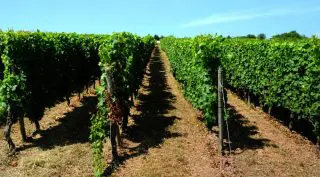Contents
Soil types – The ideal garden soil
The ideal garden soil for all of us is a crumbly and well-aerated soil that can also retain enough water.
It should be easily worked in every way and contain sufficient nutrients for the growth of our plants. This ideal soil would be a mixture of loam, sand, clay and humus.
Roughly speaking, there are “heavy” and “light” soils in our garden. This says nothing about the weight of the soil ;-), but rather about the processing possibilities. Between this rough division, there are still a lot of transitional forms. Heavy soils are pure clay soils, they are formed from the finest weathering particles of the primary rock and have been washed together by water.
Due to its dense structure, pure clay soil is very difficult to work with and for this reason is not an optimal garden soil.
But even this rather difficult clay soil can be cultivated after a few years of intensive cultivation.
But now to the actual purpose of this article. I would like to give you with this contribution a small overview of the different soil types.
Clay Soils:
Clay soil swells with rain and moisture and becomes cohesive, making it very water retentive. The clay soil has a very dense structure when cold and wet, which makes it very difficult to aerate and heat the soil. It must be made friable and thus usable for horticulture first of all by hot manure ( fresh horse-chicken and cow dung ), sand and compost.
When it rains, the clay soil is silty, and when it is dry, it becomes rock-hard quite quickly, which makes it almost impossible to cultivate.
Therefore, clay soil is also called heavy soil.
Sandy soils:
The sandy soil is a so-called “light” soil and has almost no water-holding properties. Due to the almost non-existent ability of water retention, the nutrients are washed out very quickly and completely. The sandy soil warms up very easily and is well aerated.
For use as a garden soil, a quick and abundant addition of humus, compost and similar water-holding substances is necessary.
The very positive aspects of good aeration and heatability of sandy soils, which leads to rapid so-called soil fermentation, unfortunately also entail a huge consumption of humus. However, this considerable addition of humus is necessary to make the sandy soil usable for horticulture and to take advantage of the beneficial properties of the sandy soil.
Sandy loam soil:
Sandy loam soil, as well as loamy sandy soil 😉 , are soils made of a mixture of clay and sand. The diverse composition of these soils, makes an accurate response very difficult.
The sandy loam soil is usually a fertile soil, very rich in nutrients, but very difficult to warm up and relies on an adequate supply of humus.
With good care and improvement in the form of adding hummus, sandy loam soil is an excellent garden soil.
Loess soil:
Loess soil is a soil mostly found in river valleys, consisting of dusty sand, lime, and clay particles. It is one of the most fertile soils, if it contains the necessary moisture. Loess soil is mainly found in the Rhine and Danube valleys and is a warm soil that absorbs water very well. When enriched with humus substances, this soil is an excellent garden soil.
Lime soil:
Lime soil or chalk soil is a dry and nutrient-poor soil. In Europe this soil is very rare. Clayey limestone soil (marsh soil) is very difficult to work with, but is quite fertile if there is sufficient moisture. It is not particularly recommended as a garden soil; only through intensive cultivation and the addition of humus substances can it be used as a garden soil to a limited extent.
Pure humus soil:
Pure humus soil as it is found among others in the black earth of the Ukraine and the Magdeburger Börde, has in about 3-10 percent humus and belongs to the most fertile soil types.
I hope that the article could answer a few questions about the soil types 🙂 .


